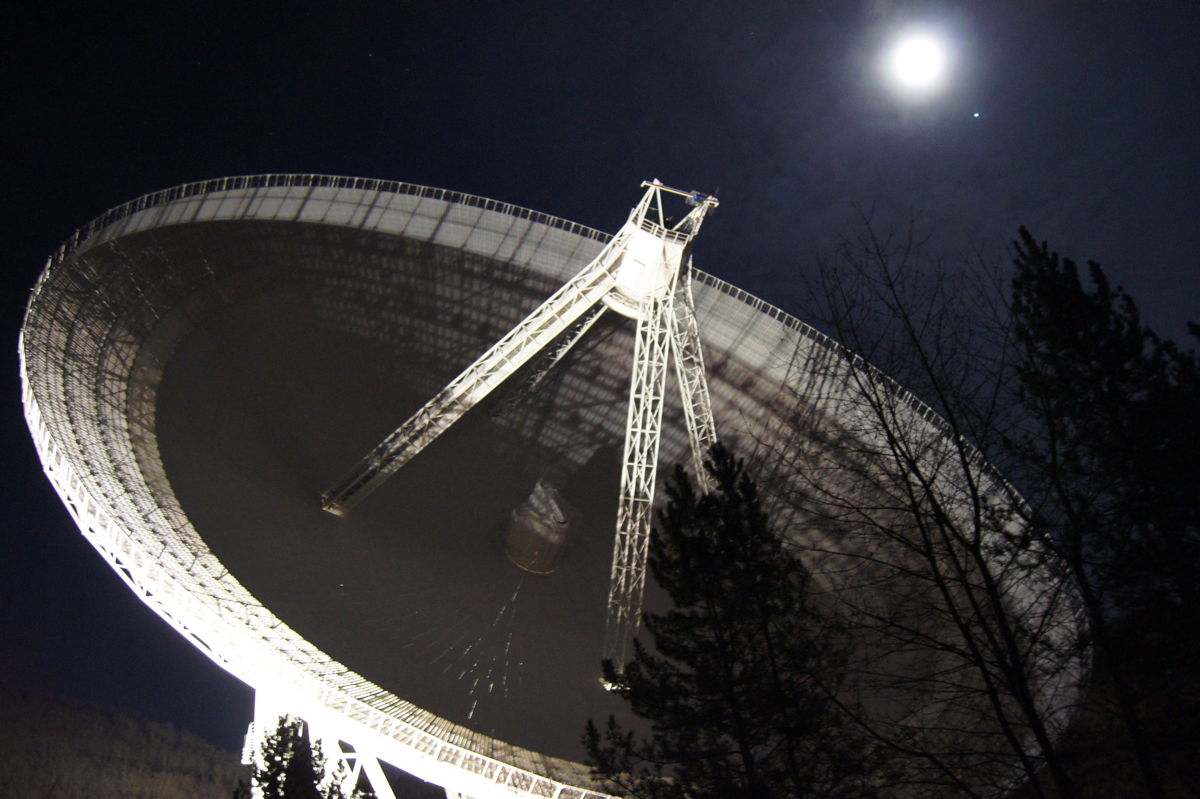Phew! Universe's Constant Has Stayed Constant

By peering at alcohol molecules in a distant galaxy, astronomers have determined that a fundamental constant of nature has hardly changed at all over the age of the universe.
The constant — the ratio of the mass of a proton to the mass of an electron — has changed by only one hundred thousandth of a percent or less over the past 7 billion years, the observations show.
The scientists determined this by pointing the Effelsberg 100-m radio telescope at a distant galaxy that lies 7 billion light-years away, meaning its light has taken that long to reach Earth. Thus, astronomers are seeing the galaxy as it existed 7 billion years ago. The telescope looked for special light features that reflect the absorption of methanol, a simple form of alcohol that contains carbon, hydrogen and oxygen.
If the ratio of the mass of the protons and electrons inside those atoms were different than it is here and now in our own galaxy, the scientists would be able to detect this in the properties of the light.
"This idea makes the methanol molecule an ideal probe to detect a possible temporal variation in the proton-electron mass ratio," astrophysicist Wim Ubachs of VU University Amsterdam said in a statement. "We proposed to search for methanol molecules in the far-distant universe, to compare the structure of those molecules with that observed in the present epoch in laboratory experiments."
Their observations confirmed that the proton-electron mass ratio has changed by no more than 10^-7 over the past 7 billion years. The universe itself is 13.7 billion years old. [The Universe: Big Bang to Now in 10 Easy Steps ]
The ratio of the mass of the proton to the mass of the electron is a type of fundamental constant, or a number that can't be deduced from theory, but must be measured in nature. If the value of this constant were very different than it is, then atoms might never have formed, and our universe would lack stars and galaxies and people.
Get the Space.com Newsletter
Breaking space news, the latest updates on rocket launches, skywatching events and more!
And if the value of this constant had changed over time, it could have far-reaching consequences for the evolution of the universe.
"If you see any variations in that fundamental constant, then you would know that something is wrong in our understanding of the foundations of physics," said Karl Menten, director of the Max-Planck-Institut für Radioastronomie in Germany and head of the Institute's Millimeter and Submillimeter Astronomy Department. "In particular, it would imply a violation of Einstein's Principle of Equivalence, which is at the heart of his General Theory of Relativity."
The findings are detailed in a paper published in the Dec. 14 issue of the journal Science.
Follow Clara Moskowitz on Twitter @ClaraMoskowitz or SPACE.com @Spacedotcom. We're also on Facebook & Google+.
Join our Space Forums to keep talking space on the latest missions, night sky and more! And if you have a news tip, correction or comment, let us know at: community@space.com.

Clara Moskowitz is a science and space writer who joined the Space.com team in 2008 and served as Assistant Managing Editor from 2011 to 2013. Clara has a bachelor's degree in astronomy and physics from Wesleyan University, and a graduate certificate in science writing from the University of California, Santa Cruz. She covers everything from astronomy to human spaceflight and once aced a NASTAR suborbital spaceflight training program for space missions. Clara is currently Associate Editor of Scientific American. To see her latest project is, follow Clara on Twitter.